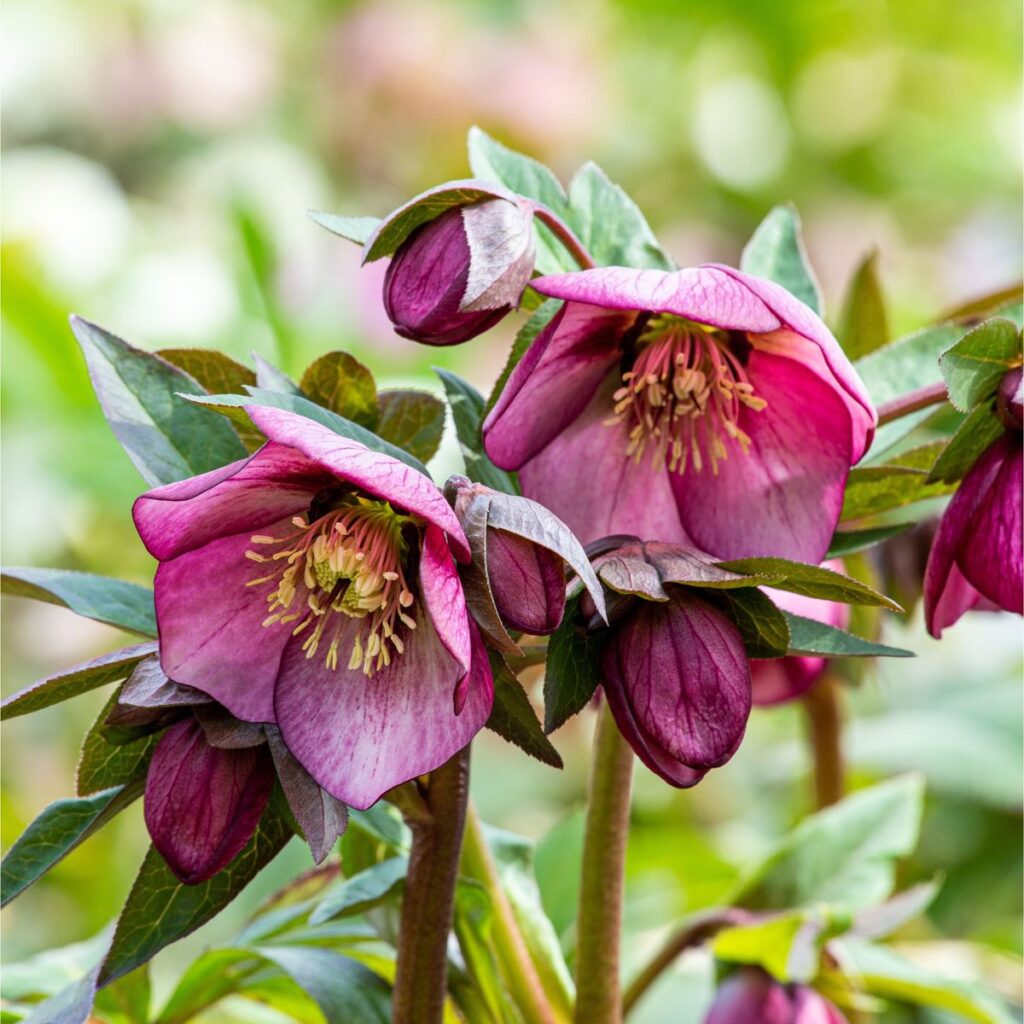If you’re looking to add some colour to your winter garden, you’ll want to learn how to grow hellebores.
One of the best perennial plants around, these hardy little beauties will bloom when little else will – and, thanks to their ability to thrive in even a partially shaded spot, they’re ideal for flower beds, garden border ideas, and even containers (on a temporary basis).
These winter flowers are essentially, the floral equivalent of a jack-of-all-trades.
‘One of my favourite winter plants, hellebores are great for pollinators in any wildlife garden,’ says award-winning garden designer Zoe Claymore, who flags that it’s important to learn how to divide hellebores if you want to make the most of their perennial magic.
To make your life easier, Zoe and most gardening pros say it’s best to select the helleborus × hybridus variety, commonly known as Oriental hybrids.
Where to buy Hellebores
This cottage garden staple doesn’t require lots of tools and equipment; all you really need is lots of organic matter, such as garden compost, and a sheltered spot in your garden with free-draining soil.
You’ll need, too, some hellebores to plant. For a striking display, try something like the Helleborus x ‘Diamonfire’ from Sarah Raven or the Helleborus × hybridus Harvington Smokey Blues from Crocus.
You can also pick up Helleborus Orientalis Mixed Perennial Plug Plants from Amazon (yes, Amazon) if you fancy bagging three different blooms at once
Helleborus X ‘diamonfire’
Helleborus × Hybridus Harvington Smokey Blues
Helleborus Orientalis Mixed Perennial Large Plug Plants Pack X3
When to plant
While hellebores can technically be planted at any time of year, it’s best to plant them between October and March (so long as the ground isn’t frozen) so that they have time to establish themselves before the dry summer months.
Where to plant
Hellebores are most often bought in flower, ready for planting, which means that the most important step in this process is choosing where to plant them so they thrive.
‘Most hellebores can tolerate morning sun, but try to find a partially shady spot if you can,’ says Christopher O’Donoghue, one of the co-directors at Gardens Revived.
‘You’ll also want well-draining soil, that’s been enriched with organic matter, and make sure you choose a spot that’s protected from strong winds,’ he adds.
How to plant
When it comes to planting your hellebores, the general rule of thumb is to dig a hole that’s twice the width of the root ball.
‘Position the plant so the crown sits just below the soil surface,’ says Christopher, who suggests you match the same level they were growing in their original container to avoid taking things too deep.
‘Don’t forget to space plants about 12–18 inches apart to allow for growth. And take care to firm them in gently, watering them well to help those all-important roots to establish themselves.’
Aftercare
It’s a good idea to get mulching after you’ve planted your hellebores, as this should keep them from drying out – just be sure to keep mulch away from the crown to prevent rot.
‘You want the soil consistently moist, especially in the first year,’ says Christopher, who notes that these plants are drought-tolerant once they’ve become established.
‘It’s also a good idea to top-dress annually in autumn with compost or well-rotted manure, and try to apply a balanced slow-release fertiliser in early spring.’
Don’t forget: you will need to prune hellebores to ensure this winter favourite will bloom this Christmas, removing some of the older growth in late winter or early spring to make room for the new!
FAQs
Are hellebores better in pots or ground?
While hellebores are better in the ground than in pots, you can grow them in containers for a winter display so long as you make sure that you transplant them permanently into a border after they’ve flowered.
Once you’ve learned how to grow hellebores, you’re in for an absolute treat as they will happily self seed around your garden if left to their own devices. This will make for an interesting hodgepodge of flowers, as they tend to form hybrid variants of their parent flowers.
Of course, you can avoid this by deadheading and removing new seedlings as and when they appear… but where’s the fun in that, eh? Happy hellebore season!
Read the full article here

